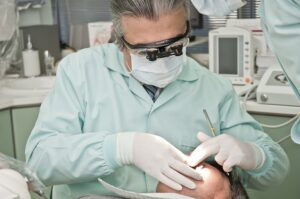Call for your appointment today 914-666-4665 | Mt. Kisco, New York

“Her functionality was severely affected; she was bedbound for approximately 5 years and required a wheelchair,” writes Lim from the University of California in San Francisco. [1] Her medical history also included fibromyalgia, hypothyroidism, anxiety/depression, and insomnia.
Her skin, spine, bones and joint pain was severe and difficult to treat. “She had severe pain episodes requiring emergency department visits and admissions with notably poor response to opioids but relieved with ketamine,” Lim states.
Treatment for pain involved an extensive list of pain therapy modalities and medications, including a history of sustained use of opioid medication, methadone, and buprenorphine 2 mg tablet for breakthrough pain approximately once every 3–4 weeks.
 Her pain medication list was extensive as she was preparing for dental extraction but she was able to taper the methadone prior to surgery. Her symptomatic management also included clonazepam (0.5 mg nightly), and quetiapine (200 mg nightly).
Her pain medication list was extensive as she was preparing for dental extraction but she was able to taper the methadone prior to surgery. Her symptomatic management also included clonazepam (0.5 mg nightly), and quetiapine (200 mg nightly).
“The patient received fentanyl 250 mcg intravenous (IV), ketamine 100 mg IV, acetaminophen 1000 mg IV, and ketorolac 30 mg IV for pain control,” writes Lim. “At the end of surgery, local anesthetic was administered in all four quadrants by the surgeon for postoperative pain relief.”
Despite an uneventful extraction of 4 molars, the woman complained of severe, widespread pain. Although the physicians used a multimodal pain regimen during surgery, they were unable to prevent PTLDS symptoms from recurring after surgery. The woman’s oral pain was minor, explains Lim, while her main issue was total body pain.
The pain was uncontrolled in the recovery room even after receiving an additional fentanyl 250 mcg IV, hydromorphone 1.2 mg IV, lorazepam 2 mg IV, gabapentin 600 mg p.o., and ketamine 50 mg p.o. But, Lim explains, “her pain was still severe and uncontrolled; therefore, a ketamine infusion was started at 5 mcg/kg/min.”
The patient’s pain became so severe that she was transferred to the Intensive Care Unit (ICU). “A multimodal pain regimen was used for 2 days and included: ketamine infusion; acetaminophen 1 g IV four times a day; ketorolac 15 mg IV four times a day; sublingual buprenorphine 2 mg once a day; oxycodone 10–20 mg p.o. as needed; and hydromorphone 0.4–1.2 mg IV as needed.”
On day 3, she was discharged but remained on pain medication, which included ibuprofen 800 mg three times a day, oxycodone-acetaminophen 5/325, two tablets four times a day, ketamine 20 mg four times a day, gabapentin 600 mg three times a day, clonazepam 0.5 mg nightly, sublingual buprenorphine 2 mg once a day, and hydromorphone 4 mg every 4 hours as needed.
“The patient was expected to taper off medications for acute pain over a period of several days as acute pain from her dental procedure was expected to resolve over that period of time,” Lim states. This case, he points out, demonstrates the difficulty of pain management in patients with PTLDS.
Doctors have confirmed that PTLDS is a serious condition that can last for years. This patient met the definition of PTLDS as outlined by the Infectious Diseases Society of America (IDSA) in 2006. [2] To fit the criteria for PTLDS, writes Lim, an individual must have a:
- Documented episode of early or late Lyme disease with post-treatment resolution of the symptoms,
- Subsequent onset of symptoms of fatigue, widespread musculoskeletal pain with or without cognitive difficulties,
- Symptoms lasting for at least 6 months, and
- Symptoms severe enough to reduce the functional ability of the patient.
There are doctors who have concluded that the cause of chronic pain of PTLDS is inflammatory, musculoskeletal, neuropathic, and/or mixed. Lim says, “The persistent symptoms may be due to central sensitization, which is known as central sensitivity syndrome (CSS).”
However, other doctors are concerned that ongoing symptoms might be due to a persistent infection. [3] There are no tests to confirm that “post-treatment” means the infection has resolved, and trials suggesting that antibiotics are not effective in treating persistent infection are flawed. There is also growing concern that Lyme disease and other tick-borne illnesses are more complex than originally thought.
It would be reasonable to revisit the woman’s PTLDS clinical history to determine whether she was adequately treated for her infection. There are patients who have been diagnosed with PTLDS after receiving only 3 weeks of doxycycline.
Related articles:
Could ketamine help manage pain in patients with post-treatment Lyme disease syndrome?
Case report: persistent pain and fatigue after treatment for Lyme disease
Post-treatment Lyme disease syndrome is a serious problem
References:
- Lim S, Kinjo S. Exacerbation of chronic pain after dental extractions in a patient with post-treatment Lyme disease syndrome. Saudi J Anaesth. 2018;12(1):112-114.
- Wormser GP, Dattwyler RJ, Shapiro ED, et al. The clinical assessment, treatment, and prevention of lyme disease, human granulocytic anaplasmosis, and babesiosis: clinical practice guidelines by the Infectious Diseases Society of America. Clin Infect Dis. 2006;43(9):1089-1134.
- Cameron DJ, Johnson LB, Maloney EL. Evidence assessments and guideline recommendations in Lyme disease: the clinical management of known tick bites, erythema migrans rashes and persistent disease. Expert Rev Anti Infect Ther. 2014:1-33.




isn’t it possible that ongoing chronic borreliosis was compounded by the release of dental spirochetal infection into body systems.
The study did not focus on the procedure. Instead the study focused on management of a complex PTLDS patient. It leaves more questions than answers.
Keep up the good work!
I appreciated the author’s description of the pain and difficulties managing pain in a patient with a complication of Lyme disease called PTLDS.
This has happened to me more than once over the 40 years I have had Lyme. The body just can’t handle added insults. I have it now, and due to the current opioid hysteria, I have NO access to pain control, even during the 5 weeks out of the last 6 that I was hospitalized in 2 different hospitals for suicidality because of the intense pain. They simply refused to treat with opiates. Nothing else they tried made any difference. The NSAIDS still have me doubled over in pain. I am home now in agony. Pain specialists in my area that take Medicaid no longer prescribe. I lost my job over my former pain specialist abruptly cutting off my pain meds in January, undoubtedly due to fear of repercussions for prescribing. I can’t possibly work now in this much pain. Now I can’t pay for my Lyme treatment anymore. I fear we are going to see an increase in psychiatric crises and suicides for the poor souls who suffer with chronic pain, including us Lymies.
Thank you for sharing. Your problem reinforces the need to address pain as a complication of Lyme disease.
Diagnosed with RSD in 1996 after a crush accident rt upper limb and that is where it all started. Surgeries that made pain better then quickly worse. Then Fibro in 2003, then severe back problems in 2000, cervical in 2004-5 to presently dealing with a bad pinched nerve ,can’t feel my left hand, and where I broke the head of the humerus is 08′ man it hurts ! I had a rash come and go on left lower leg since after the 2013 bug ? bite incident only to come and stay last Spring 2017. It is still there and was diagnosed as fungal just two weeks ago after several inconclusive biopsies. Cream not clearing it up. I’m at a loss of what to do . I am 52 and in 2013 I had a neg Lyme test but had all the symptoms, then 2017 Sept had a positive test , treated with Doxycycline . I am instructed to stay on it because when I stop the Doxycycline symptoms go crazy bad. Last Saturday despite being on it still I became dizzier than usual, extremely confused, so tired I suddenly had to go to sleep in the middle of the day, so many symptoms, nausea too and my mouth and gums sore, fingers crack open for just carrying a bag up the stairs ??? I’m going to buy some Briggs (mother)Apple Cider Vinegar and what do I have to lose. Arthritis Dr wants to dump me now that he knows I don’t have psoriasis and wants to take me off methotrexate now so my joints are screaming again now from the decrease in that medicine. Sorry if this is hard to understand as I am in between crisis’s
Your case shows the complexity and severity of some illnesses. The symptoms overlap between the conditions you discusses. It is possible that you have two conditions.